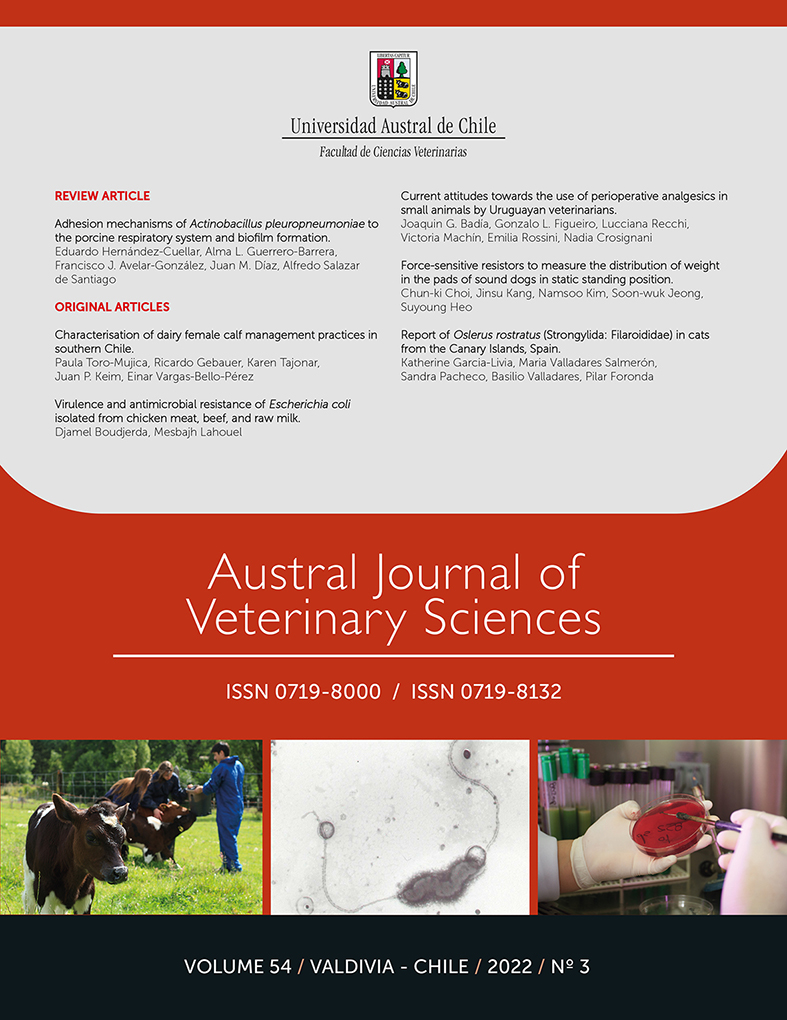Adhesion mechanisms of Actinobacillus pleuropneumoniae to the porcine respiratory system and biofilm formation
Conteúdo do artigo principal
Resumo
Actinobacillus pleuropneumoniae is a Gram-negative bacterium and the causative agent of porcine pleuropneumonia, a highly contagious disease of pigs characterised by fibrinohaemorrhagic necrotising pneumonia. Although it has been well controlled in some developed countries, outbreaks can occur in pigs of all ages in contact with asymptomatic carriers, leading to significant economic losses to the swine industry due to the high morbidity and mortality rates. Adhesion is a critical step in the colonisation of the swine respiratory tract and the pathogenesis of the porcine pleuropneumonia; however, a literature review of this process is not available to date. Therefore, this review aims to provide information regarding the molecules that have been described in the adhesion of A. pleuropneumoniae to cells and tissues of the porcine respiratory tract. Since adhesion is the first step in biofilm formation, we included a section to describe the genes involved in this process; some of these genes could participate directly or indirectly in the adhesion of A. pleuropneumoniae to the porcine respiratory system. Although the role of biofilms in porcine pleuropneumonia is still not clear, these molecules could be considered in the future as candidates for vaccine development.

